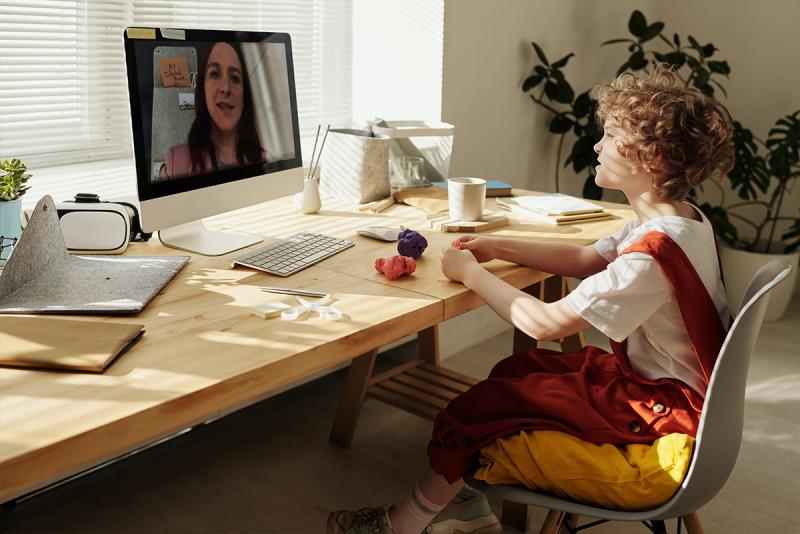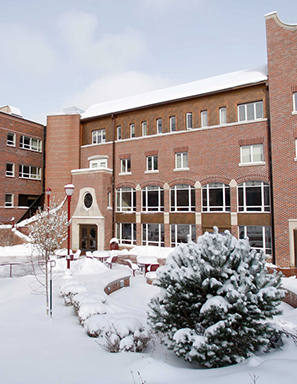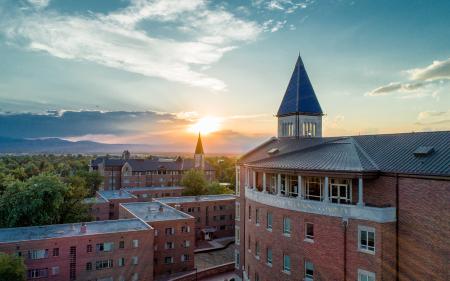Changes in School Social Work
School social workers are contending with the COVID-19 pandemic’s effects on kids

Since the COVID-19 pandemic hit Colorado in March 2020, every day as a school social worker has been a “triage moment,” says Graduate School of Social Work (GSSW) alumna Felicidad Fraser-Solak, MSW ’10, LCSW. Students cry. They fight. And some are suicidal, Fraser-Solak says. “The kids are stressed out.”
Fraser-Solak is a school social worker for a specialized school in Adams 12 Five Star Schools serving students in grades 6–12, all of whom have individualized education programs (IEPs). She also counsels kids through her private practice. The day-to-day uncertainties and challenges that students face — whether or not school will be open, mastering new norms and practices for online learning, wondering whether a family member will get sick, isolation from friends — are increasing their depression, anxiety and overall hopelessness. “The level of despair is higher than I’ve ever seen,” says Fraser-Solak, recent past president of the National Association of Social Workers Colorado Chapter.
“It’s been hard,” she adds. “In a scary movie, the music lets you know something is coming. We’re stuck in that moment.”
A Shifting Job Description
The day-to-day logistics of school social work have changed dramatically over the last several months, says GSSW Associate Professor Julie Laser-Maira, coordinator of the School Social Work Certificate. “Historically, you did everything face-to-face.” Now she says, some school social workers are doing most of their work online while others juggle multiple schools with both online and in-person formats and different schedules. In one metro area school, she says, the social worker is now responsible for taking the temperature of every child when they show up for the day. “You have so many things thrown at you at once, it’s really difficult to operate,” she says.
At the same time, teachers, students and the social workers themselves are under incredible stress. Since the pandemic started, GSSW alumna Carmen Espinosa has seen a 30%–40% increase in students needing additional support at the Denver charter high school where she is a school social worker. “I’ve been receiving so many messages from teachers and students about how stressed and overwhelmed they are. The amount of work that educators are putting in, the amount that students are putting in online, it’s frightening, it’s draining,” says Espinosa, MSW ’18. The uncertainty around schools offering in-person learning has been particularly difficult, she says. “That inconsistency, waiting for the other shoe to drop, isn’t beneficial for the health and wellness of students and staff members.”
When the pandemic hit, some kids stopped showing up for meetings or in online classrooms, Laser-Maira says. “If you’re on the special education side of things, you’re required to spend a certain number of minutes for each child for their IEP. That can be really stressful if you can’t track them down.” Technology isn’t always reliable, there are fewer opportunities to check in with teachers, and running groups and activities remotely — or masked and 6 feet away — can be a particular challenge.
And without in-person contact, it can be difficult to assess whether a student might be experiencing abuse or neglect. Even checking in with students online, Laser-Maira says, “You don’t know if there are people off-camera listening in. For some kids, staying at home might not have gone so well.”
Still, fundamental social work skills such as critical thinking, active listening and building rapport are just as relevant online and help school social workers to successfully navigate the changing landscape of their jobs during the pandemic, Laser-Maira notes.
The Future Landscape
Currently, most schools have just one social worker, and that individual can be stretched by basic responsibilities such as counseling or IEP evaluations. Schools need more, Laser-Maira says. The disruption caused by the pandemic provides a unique opportunity to reevaluate and do some things differently. That may mean expanding school social work staff — and their roles — to include things such as supporting teacher mental health on the micro side and transforming policy and culture on the macro side.
To get there, Colorado will first need to address the systemic racism inherent in funding inequities and ensure that all of its schools are adequately resourced, Laser-Maira says. For instance, according to the Colorado Children’s Campaign, Colorado provides a disproportionate amount of funding to districts with high costs of living — around three times what is spent to educate students living in poverty and more than six times what is spent on special education.
Fraser-Solak agrees, noting that more funding is needed for mental health care and wraparound supports such as parenting training. She gets up to 15 calls a day for private-practice help; sometimes, clients have to pay her with spare change. “Mental health care needs to be available across the board, without shame,” she says.
If they’re freed up from other day-to-day responsibilities, Laser-Maira adds, school social workers could also play a larger role in transforming school climate.
That’s crucial, says GSSW Associate Professor Yoli Anyon, who studies school discipline. “The move to virtual learning has created new ways that teachers, school administrators and other adults are policing young people, especially kids of color, and it’s happening in their own homes.”
In one recent case, school officials called police on a Black 12-year-old boy in Colorado Springs, Colorado, after a teacher saw him handling a toy gun during an online class. The student, who has ADHD, was suspended for violating the school district’s policy about possession of a weapon on school grounds or at school functions or events. But schooling in person is different than online schooling, Anyon and other experts assert, and policies should be reviewed and revised to address the realities of education today. “Online learning requires the same intentionality around community building and prevention work to avoid negative school discipline outcomes,” Anyon says, noting that school discipline practices such as suspension disproportionately impact students of color.
The disruption to the education system caused by the pandemic provides an opportunity to rethink how we educate kids and address longstanding disparities and systemic racism, Anyon says. She points to a recent national poll finding that 89% of Black parents considered sending their kids back to school in person to be a large or moderate risk, compared to 80% of Hispanic parents and 64% of white parents. The finding was a wakeup call, Anyon says. “I realized that parents of color already don’t trust schools to keep their kids safe, so why would this be different? If you don’t trust them under normal circumstances, why would you trust them during a pandemic?”
“What we know about the role of social workers in changing discipline outcomes is more relevant than ever,” Anyon adds. “School social workers need to be change agents.”
Fraser-Solak agrees. “This is an opportunity to change the systems, close the gaps,” she says. “We don’t just need more social workers, we need more anti-racist social workers” — school social workers who are ready to help reimagine education and build something new and even better.




